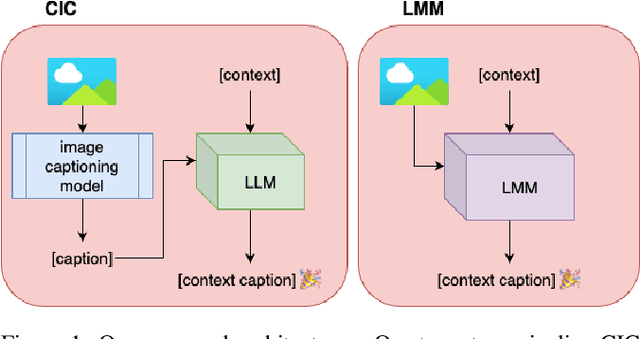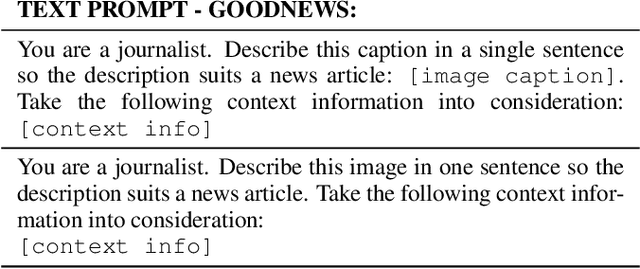Thiago Gouvea
Enhancing Journalism with AI: A Study of Contextualized Image Captioning for News Articles using LLMs and LMMs
Aug 08, 2024



Abstract:Large language models (LLMs) and large multimodal models (LMMs) have significantly impacted the AI community, industry, and various economic sectors. In journalism, integrating AI poses unique challenges and opportunities, particularly in enhancing the quality and efficiency of news reporting. This study explores how LLMs and LMMs can assist journalistic practice by generating contextualised captions for images accompanying news articles. We conducted experiments using the GoodNews dataset to evaluate the ability of LMMs (BLIP-2, GPT-4v, or LLaVA) to incorporate one of two types of context: entire news articles, or extracted named entities. In addition, we compared their performance to a two-stage pipeline composed of a captioning model (BLIP-2, OFA, or ViT-GPT2) with post-hoc contextualisation with LLMs (GPT-4 or LLaMA). We assess a diversity of models, and we find that while the choice of contextualisation model is a significant factor for the two-stage pipelines, this is not the case in the LMMs, where smaller, open-source models perform well compared to proprietary, GPT-powered ones. Additionally, we found that controlling the amount of provided context enhances performance. These results highlight the limitations of a fully automated approach and underscore the necessity for an interactive, human-in-the-loop strategy.
 Add to Chrome
Add to Chrome Add to Firefox
Add to Firefox Add to Edge
Add to Edge